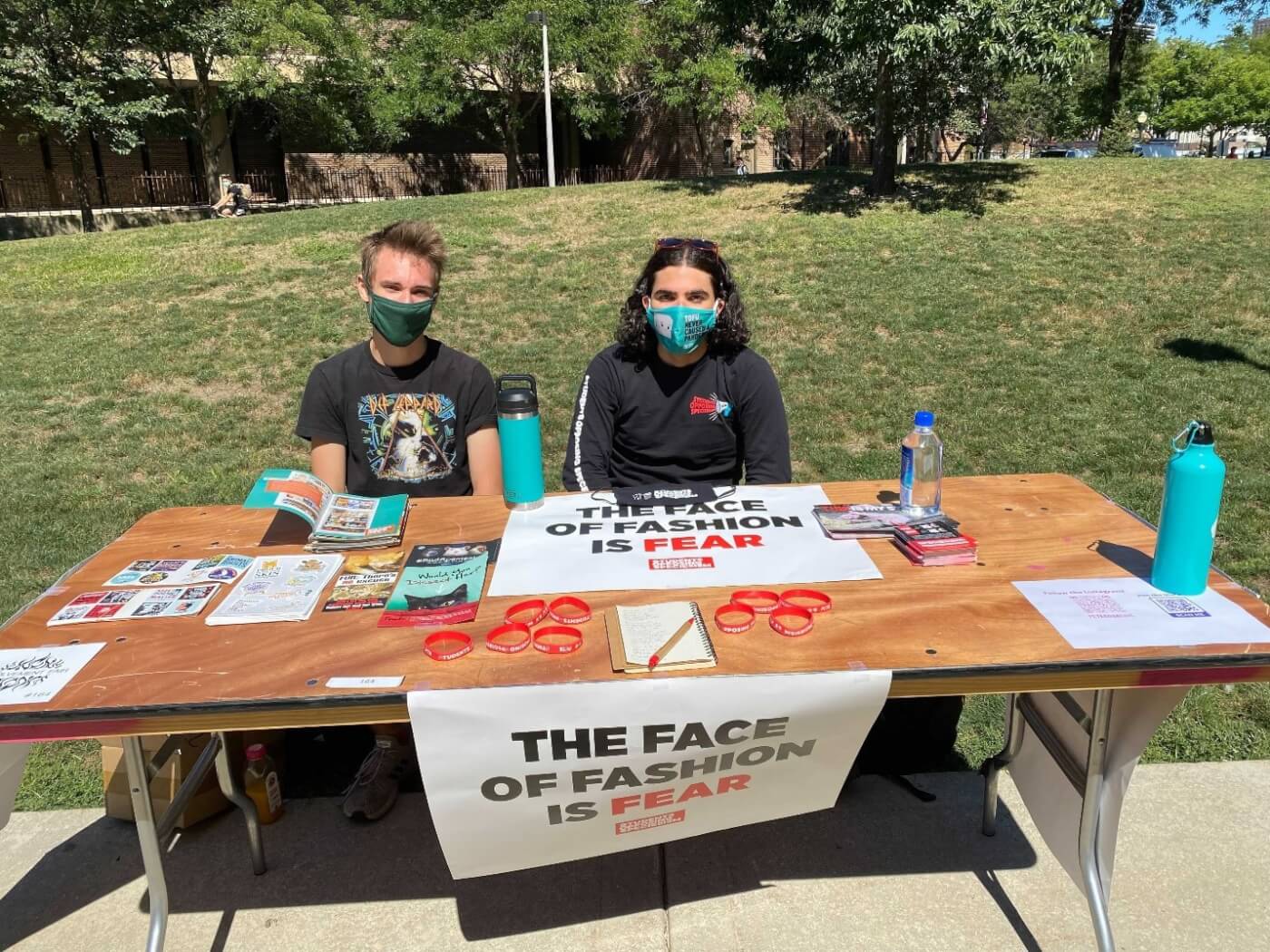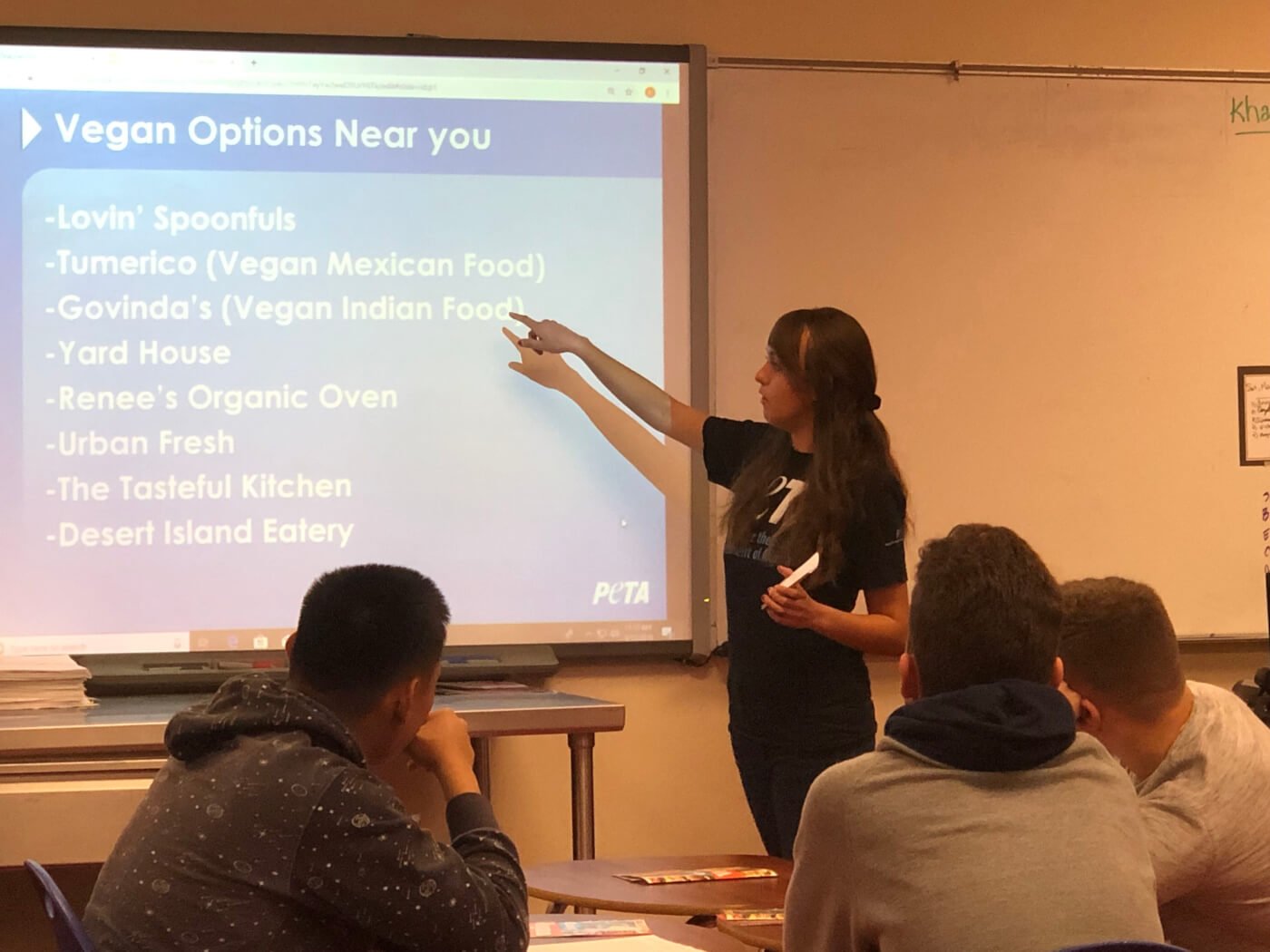Start an Animal Rights Club at School
Participation in school clubs is hugely important for students to include on college applications and even on their résumés when looking for that first job. It’s also an important and effective way to provide them with a learning environment outside the classroom, cater to their interests, teach them leadership skills, and connect them with like-minded students and community members. Many students, especially those belonging to Gen Z, are passionate about animal rights, which is a social justice movement. Helping to facilitate an animal rights club is a fun and easy way for you and students to make a difference for animals!

Why Is an Animal Rights Club Important?
An animal rights club is probably the single most effective way to get students active in animal rights at school and make a difference on campus. It’s a platform that enables educators and students to make a significant amount of change, and it also allows you more freedom to discuss animal rights issues in depth.

These are some big things that can be accomplished through such clubs:
- Changing your school’s policies to avoid cruelty to animals (e.g., replacing animal dissection with digital tools or banning the use of glue traps to remove mice)
- Fundraising to help animals locally and nationally
- Teaching students to speak out against injustice and participate in activism
- Raising awareness of animal rights issues among students, faculty, and community members
- Adding vegan options to your school’s cafeteria or handing out free vegan meals in your community
Having an animal rights club at your school empowers students and gives them hands-on experience on how they can help animals—the end goal being that they will take this knowledge into adulthood and hopefully create a kinder world for all animals to thrive and live a natural life without the fear of human violence or destruction.
—Stephanie McLaughlin, English Teacher and Faculty Advisor for her School’s Animal Rights Club
Starting an Animal Rights Club
Before you begin, it’s a good idea to have a general mission and some goals in mind. These will be helpful to share when you’re getting an initial group of students on board—and also to have ready when you officiate the club. Jot down your ideas for the club’s overall mission so that students can use them as a jumping-off point when creating an official mission statement or constitution.
Most school clubs are actually run by students (with the help of a faculty advisor), so you should have at least a small group of interested students who can serve as the club’s founding members. Chances are, you probably already know a few students who are activists, vegans, or otherwise sympathetic to animal rights issues, so chat with them about their interest in an animal rights club and get them involved from the start.

It’s important to empower your students to take charge and work on their leadership skills, so once you have some on board, introduce them to PETA’s Students Opposing Speciesism (SOS), a youth-led revolt against human supremacy. When they sign up to join SOS, students will receive e-mails and texts to let them know about campaigns and actions to help animals, activism training courses and workshops with other student activists, free stickers to spread the word, and more. Students will also get a welcome kit in the mail with free stickers, an SOS wristband, and more to help them get started sharing the message of animal liberation immediately.
Here are some testimonials from active SOS hub members about the importance of animal rights clubs:
Teachers can play a crucial role in organizing a successful animal rights group in their school. By being the bridge between the student body and faculty, teachers help endorse campaigns to gather support from other staff. Teachers will be helping their students speak up for what they believe in, utilize teamwork, and engage in activities that are not only preparing them for real-world experiences but also building a better future for themselves.
—Alexis Collum, University of Central Florida SOS Hub Organizer
Being a leader for my animal rights group comes with great responsibility and demands many leadership skills, but don’t let that scare you! Me and every member of the San Antonio Students Opposing Speciesism Hub are constantly making history.
—Mariah Smith, San Antonio SOS Hub Organizer

Sorting Out the Basics
You’ll need to take care of a few basics before you can really dive into the fun stuff:
- Make sure your club is officially recognized as a school organization. This involves simply contacting your school activities office or administration to find out what it takes to become an officially recognized club and following the steps from there.
- Pick a place and time to meet, and set a schedule. Many teachers use their classroom as a weekly meeting place for clubs and gather either at lunchtime or right after school. You can also meet virtually using Zoom, Skype, Google Hangouts, or other online tools.
- Name your club. Choose the name with your students, and be as creative or to the point as you’d like. Students for the Ethical Treatment of Animals (SETA) is a popular one.
- Start a group for your club on Discord and Instagram. This will make it super-easy for students to share updates, post about events, communicate with each other, sort out schedules, and recruit their classmates online.

Spreading the Word
Now that your school has an official animal rights club (congratulations!), it’s time to start spreading the word and getting more students involved. Here are some ways to do that:
- Hold a kick-off event to let people know about the club. The group could table at lunchtime to start connecting with others (perhaps with some yummy vegan snacks to share—because everyone loves free food).
- Request a mention in the morning announcements—and if your school has a newspaper, ask for a write-up to advertise the new club.
- Hang up signs or tear-off flyers around campus. These can be posted on bulletin boards or other designated areas on campus.
- Connect with other like-minded groups at school (such as social justice or human rights groups, environmental clubs, etc.) and ask if your group could cohost an event with them or make a presentation at one of their meetings about the intersection between animal rights and their club’s mission.
- Don’t forget the importance of word-of-mouth advertising. Mention the new club to all your classes (it’s a bonus if you can work it in during an anecdote or a lesson about animal rights), and have the founding members spread the word to their friends and classmates.

Making a Difference With an Animal Rights Club
Hopefully, your club is thriving at this point—so it’s time to start hosting events, launching campaigns, and achieving victories for animals. Some groups choose to tackle one issue at a time, while others work on many issues at once.
Need some inspiration? Do any (or all) of the following:
- Share with the members of your animal rights club the SOS “Guide to Launching Your Own Campaign to End Speciesism,” which has all the advice they’ll need to work together to plan and carry out their first animal rights campaign.
- Host screenings of animal rights documentaries and other films on campus—there are many to choose from.
- Hold vegan bake sales or fundraising drives to support your club or your local animal shelter.
- Work with your school to replace animal dissection with a virtual dissection program. TeachKind may be able to donate programs for free or a low cost.
- Petition your school to offer Beyond Burgers or other vegan options in the cafeteria.
- Campaign to change school and district policies regarding field trips or fundraisers involving live animals.
- Host an outreach event during lunchtime—such as a vegan food giveaway.
- Organize a protest at a business in the community (e.g., at PetSmart).

TeachKind can help you and your students every step of the way—by providing free materials (like leaflets and stickers), advising on upcoming campaigns, or even hosting a virtual presentation with a PETA staffer.

Have a question about starting an animal rights club, or just want to share what your school’s club is up to? Fill out this form and let us know:
By submitting this form, you’re acknowledging that you have read and agree to our privacy policy and agree to receive e-mails from us.





